In 2008, Steve Jobs took the MacBook Air out of a file folder and it became deeply tied to 'thin and light'.

▲ A scene worthy of the history of technology
And the wedge-shaped aluminum unibody has become the strongest design language in the MacBook Air line.
Fourteen years later, the MacBook Air with the M2 chip is a radical departure from traditional design, utilizing a flat design similar to the new MacBook Pro.

▲ Light as a feather
This is the most significant change to the MacBook Air line, but the Air is still synonymous with thinness and portability.
With a uniform thickness of 11.3mm, the new MacBook Air is already thinner than the former iPhone 2G (11.6mm).
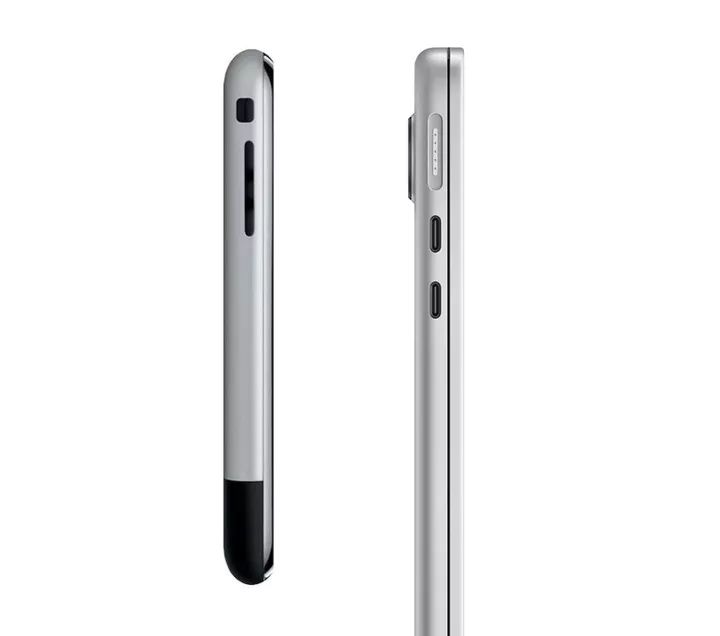
▲ Left: iPhone 2G, Right: MacBook Air (M2)
Not only that, but the screen size of the new MacBook Air has been bumped up to 13.6 inches, a tiny size increase that, not surprisingly, should be brought about by the 'bangs' screen, which is not much different from a traditional 13-inch laptop in real-world experience.
If you want a big-screen Mac, there's still only one option - the MacBook Pro 16.
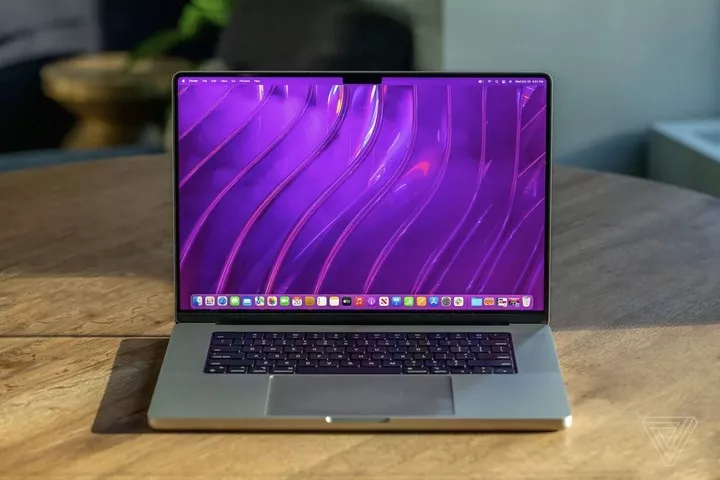
▲ MacBook Pro 16 Image from: TheVerge
Around the time of the new MacBook Air's launch, both DSCC, a display supply chain consultancy, Ming-Chi Kuo of Tianfeng International Securities, and Bloomberg all said, based on sources, that the MacBook Air product line would diverge into a new larger 15-inch screen size.
Not only the MacBook Air, but the iPad will also be available in a 14.1-inch size, and a 'foldable' version of the larger iPad can't be ruled out in the future.
Apple "computer", the screen keeps getting bigger
As per Apple's positioning, there are actually two branches of personal computers, the traditional MacBook and the iPad.
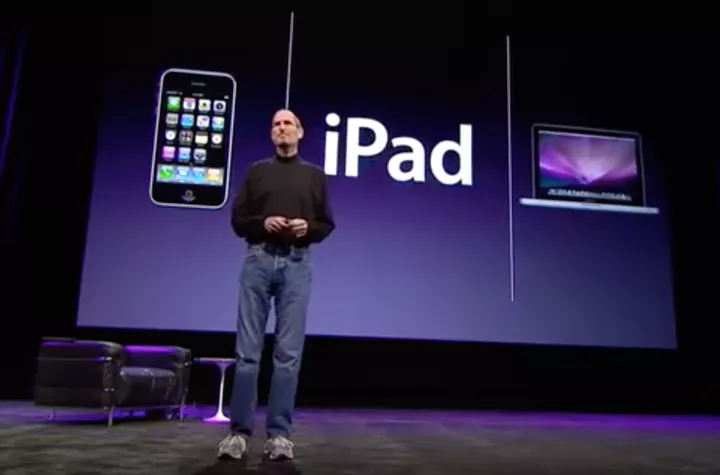
When iPad first appeared, it was a complement to the 3.5-inch iPhone and 13-inch MacBook, with 9.7 inches being its prime size.
But with the advent of the Plus version of the iPhone, which continues to squeeze space out of the iPad, the previous 'fill-in' has lost its meaning.
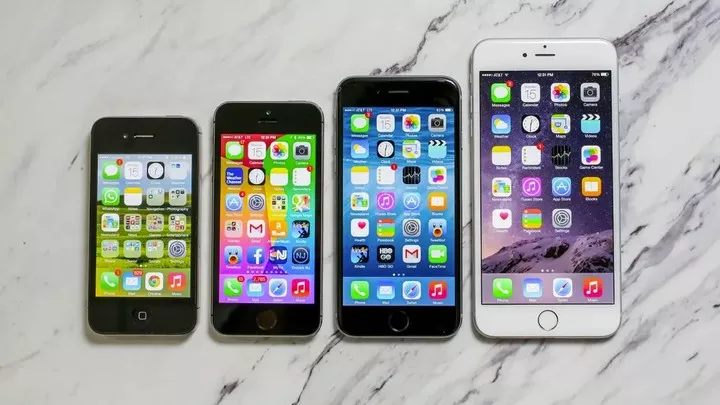
▲ The progressively larger iPhone Image from: cnet
In addition, the long lifecycle of the entertainment-oriented iPad has reduced the willingness to upgrade.
Along with the rise in performance of the A-series chips, the iPad Pro was introduced and the screen size was bumped up to 12.9 inches. iPad Pro is no longer going to fill the spot, but is being supported as the next generation of personal computers.
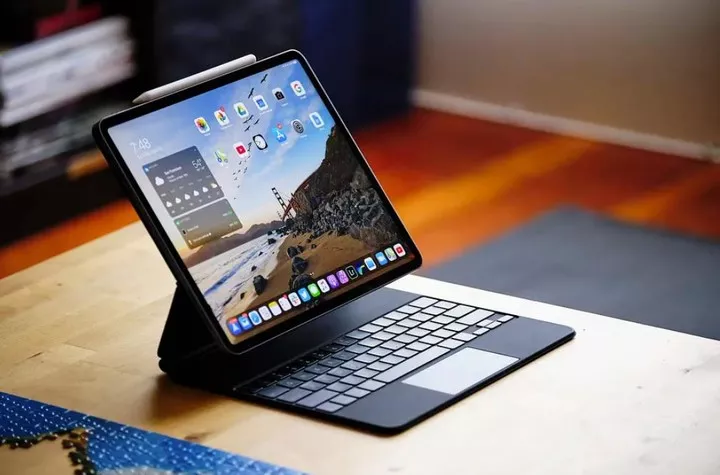
▲ iPad Pro 12.9 Image from: TheVerge
That same year (2016), Apple announced that it was discontinuing the 11-inch MacBook Air, and the 13-inch MacBook Air became the entry point for Macs.
Apple expanded the screen size of the MacBook Pro to 16 inches before moving to the M chip. Then the newly redesigned MacBook Pro lineup moved up to 14.2-inch and 16.2-inch screens.

The MacBook is likely to continue the design style of the MacBook for several years.
Even leaving aside the extra size benefits of the 'bangs' narrow-bezel screen, the new MacBook Pro still compromises on size for the sake of a larger screen.
The 'big screen' is pretty much a hallmark of the Pro series in Apple's product lineup, with the iPad Pro maxing out at 12.9 inches and the MacBook Pro maxing out at 16.2 inches.
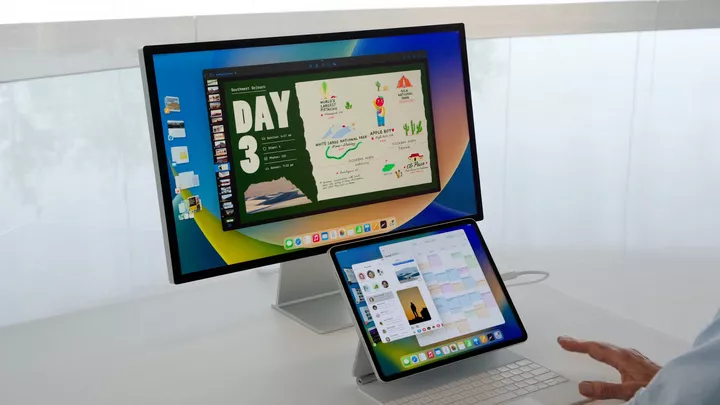
▲ External Studio Display for full productivity.
The larger screen size certainly gives room for multitasking and multithreading.
Also, the "Desk Scheduler" feature introduced in the just-announced new iPadOS 16 and macOS Ventura systems will undoubtedly require a larger screen to take full advantage of it.
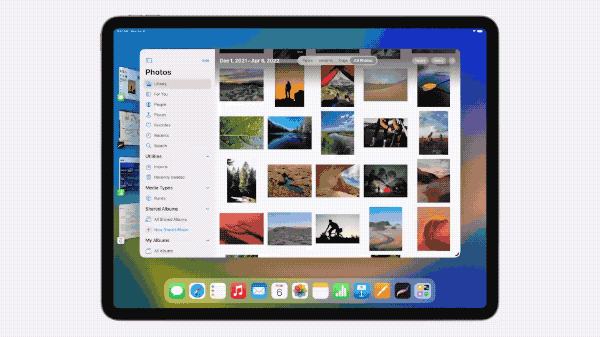
The "Front Desk Dispatch" certainly takes up some screen space.
Even in the 14-inch MacBook Pro, the 'desk dispatch' is still a bit cramped and the screen size is still inadequate, not to mention the experience on the iPad Pro 11.
Larger screen sizes that have become necessary.
"Big screen" is no longer tied to the Pro
In Apple's non-Pro lineup, the largest screen size is just 13 inches. If you just want a "big screen", you'll have to bite the bullet and buy the Pro lineup, and for that you'll have to put up with the lack of thinness and pay for the extra performance.
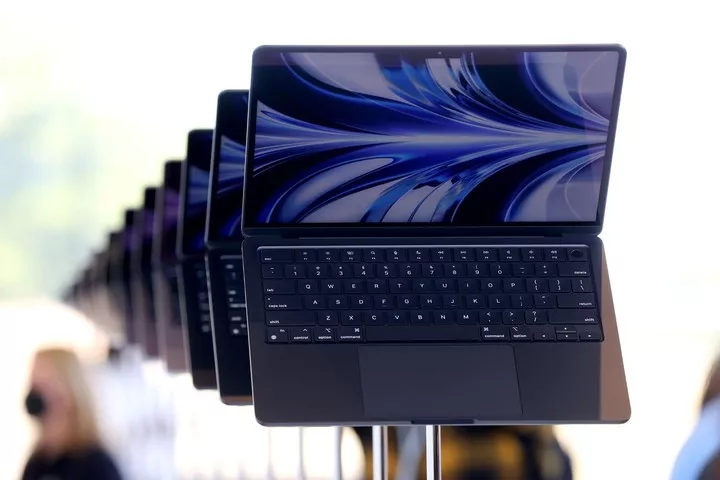
▲ MacBook Air 2022 Image from: HyperBeast
When the 15-inch MacBook Air appeared in various 'rumors', many users in the comments section of both The Verge and 9to5Mac said 'Yes'.
The large-screen, non-Pro MacBook is essentially an act of market segmentation, expanding what was once a single product to cater to a wider range of users.

The larger MacBook Air fits both the need for a larger screen and the need for a thinner, lighter MacBook, and is perhaps also "cheaper" than the Pro.
When the M2 MacBook Air launched, many people were ambivalent about its $9,499 starting price and hesitant to add money to the Pro, and the new MacBook Air seemed like a bit of a 'price anchor'.
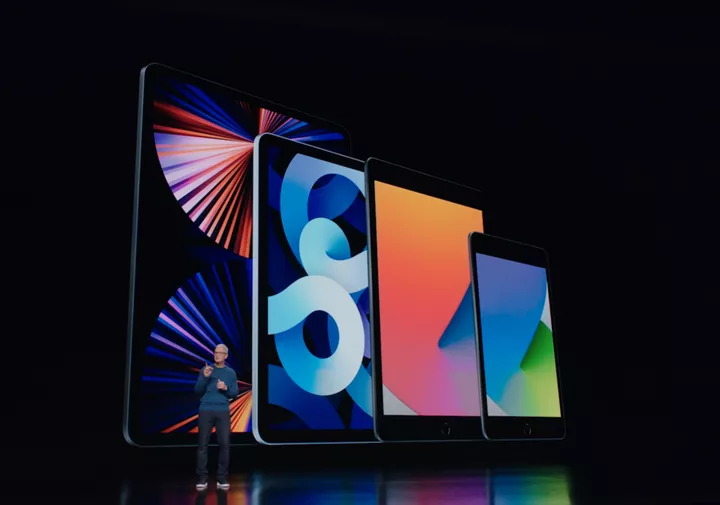
And even though the larger MacBook Air may have a higher price tag than the 9499, it will most likely be a product that hits a pain point.
And in tablets, it's highly likely that the 14.1-inch will also be in the non-Pro line. The "big screen" is its selling point, and forms a double line with the 11-inch iPad.
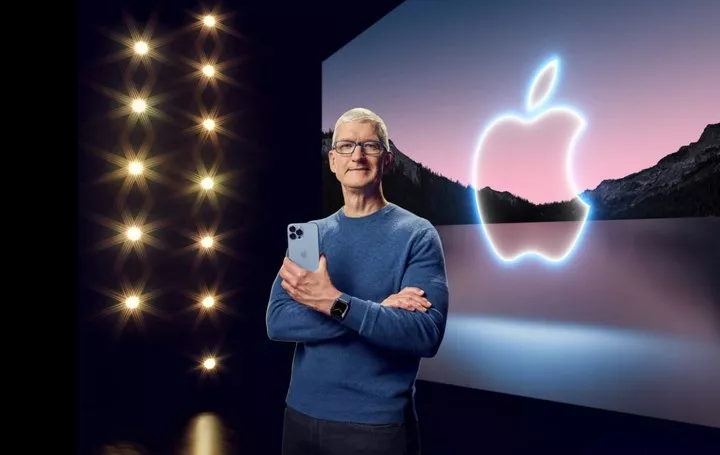
The constant segmentation of the product, similar to the iPhone generation into four parts, is designed to better drive sales and increase market share.
The obvious attribute of a large screen, coming off the Pro, is almost a card played to boost sales.
Big screen Apple devices, the code to boost sales
The iPhone 6 series has held the record as Apple's top seller, with 220 million units sold one after another. And the larger iPhone 6 Plus has been the backbone of the iPhone 6 lineup with 60 percent of shipments, surpassing the relatively small iPhone 6.
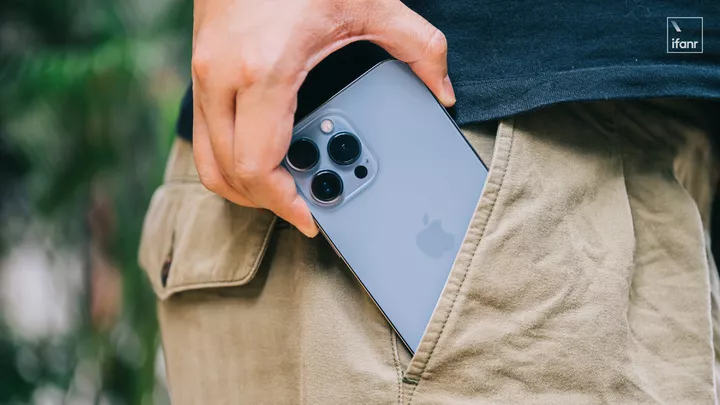
The large-screen iPhone that followed has been the mainstay of shipments, too. Even though the iPhone is now divided into Pro and non-pro, it's still the big one that ships.
Even this year's iPhone 14 series will see the removal of the mini and the addition of a larger iPhone similar to the Pro Max size, all because of the magic of the "big screen".
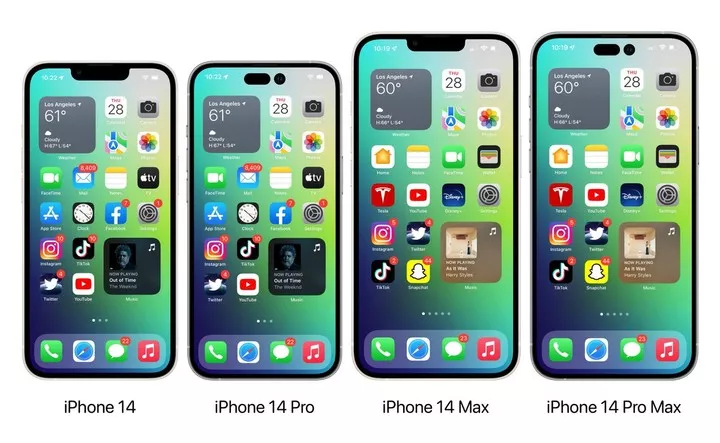
▲ Civilian renderings, if any, are purely coincidental
The recent early entry of 'folding screens' by major manufacturers is also, in some ways, a mega-screen device, and the most attractive thing about them is the large size of the screen.
The Mac or iPad are still in the process of fully converting to M chips as opposed to the iPhone, which has a clear lineup.
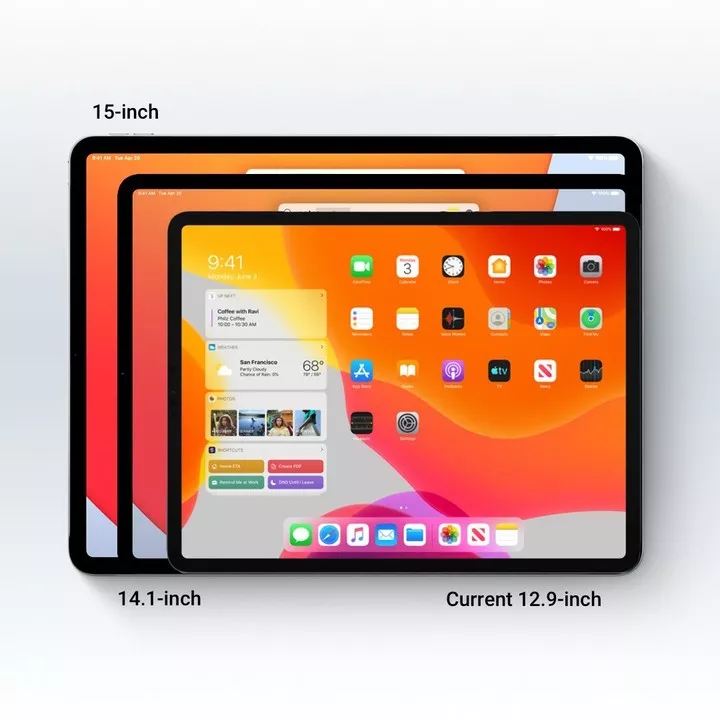
▲ A bigger-than-bigger iPad hypothetical Image from: 9to5Mac
A new design style for the Mac has been confirmed, and the iPad may be getting a round of updates later this year as well.
With the iPhone, which continues to segment the market, Apple has a very high market share, and in contrast, the Mac or iPad still has some room for improvement.
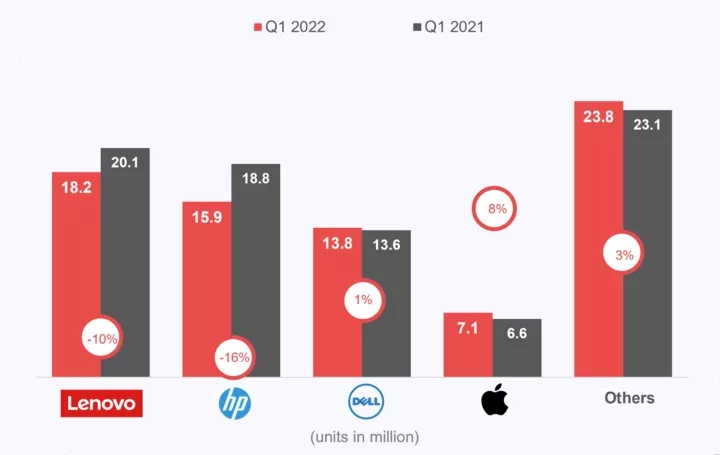
▲ Mac still a niche choice Image from: CounterpointResearch
While worldwide PC shipments fell 4.3 percent in the first quarter of 2022, MacBook sales bucked the trend by 8 percent, all due to the differentiation put in place by the M1 MacBook, so says CounterpointResearch in its report.
Even though the MacBook has a very strong showing, it still only accounts for 7.1 percent of the overall share and remains a niche.
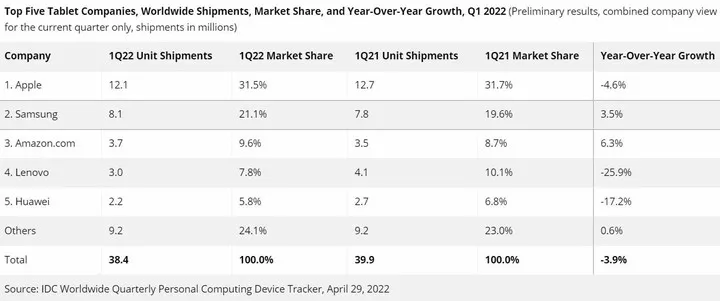
▲ The iPad's advantage is shrinking Image from: IDC
Similarly, the tablet market shrank by 3.9 percent in the first quarter of 2022. iPad, while holding a 31.5 percent share, slipped 4.6 percent compared to the same period last year along with the broader environment, and the gap to the second-place Samsung Galaxy Tab is closing.
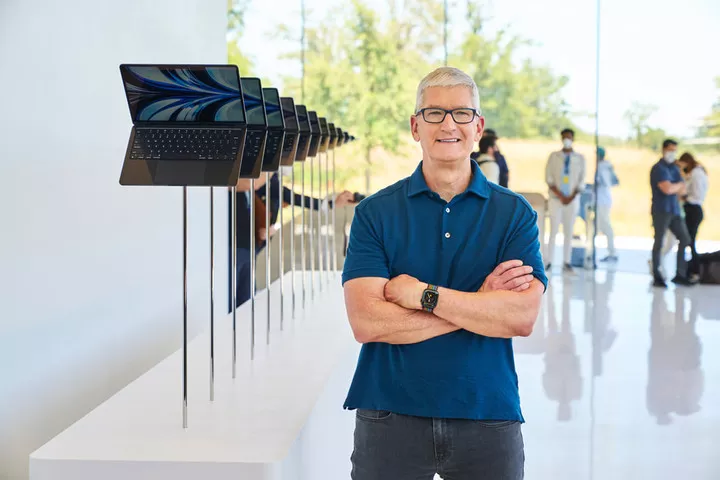
The M-chip dividend is fading, and the new designs, sizes, and segmented demand positioning that have emerged with the M2 are proactive changes Apple is making for higher sales and greater market share.
As with the iPhone 6 series, Apple is clearly hoping to win over more consumers and gain a larger market share with a brutally simple change to the 'big screen'.